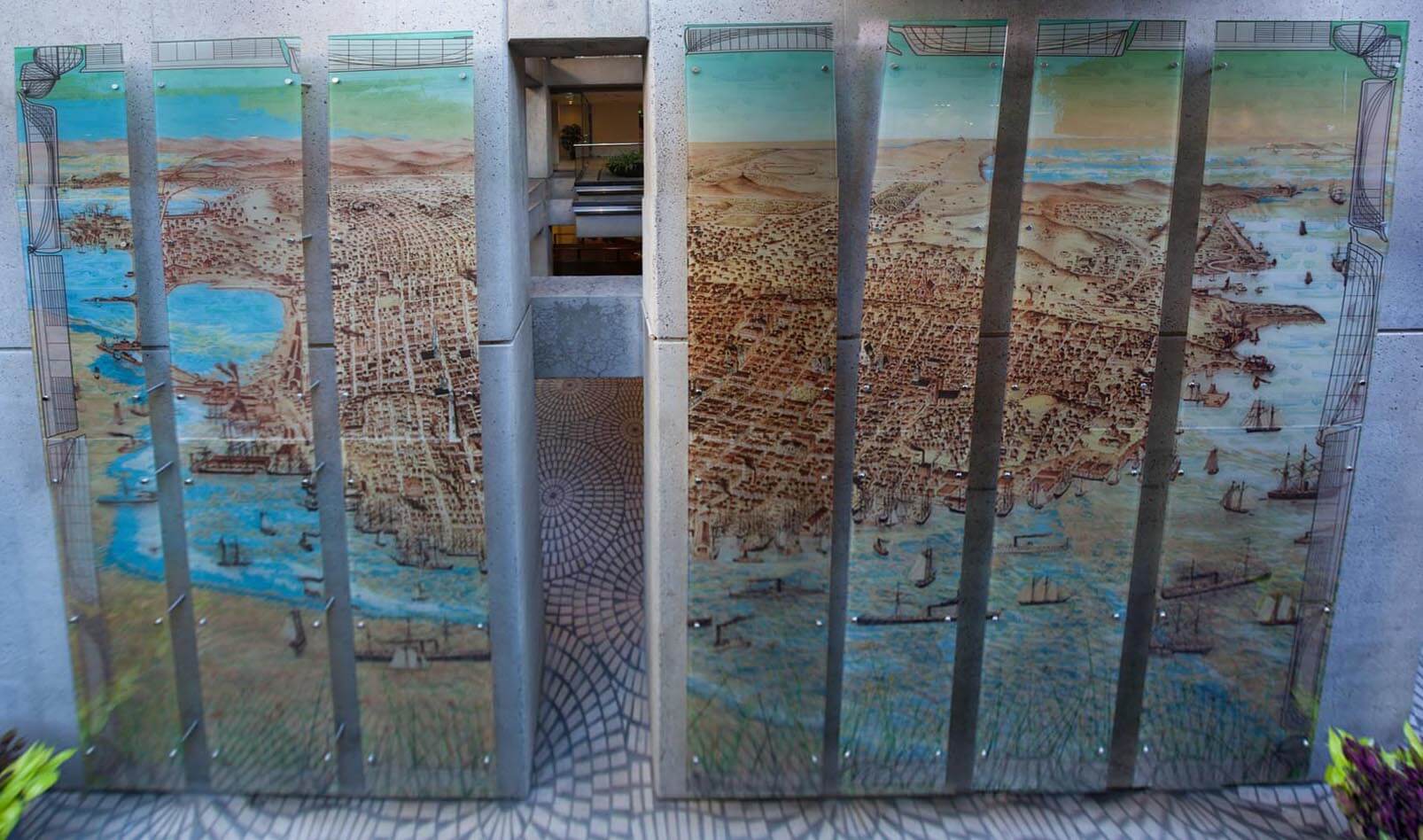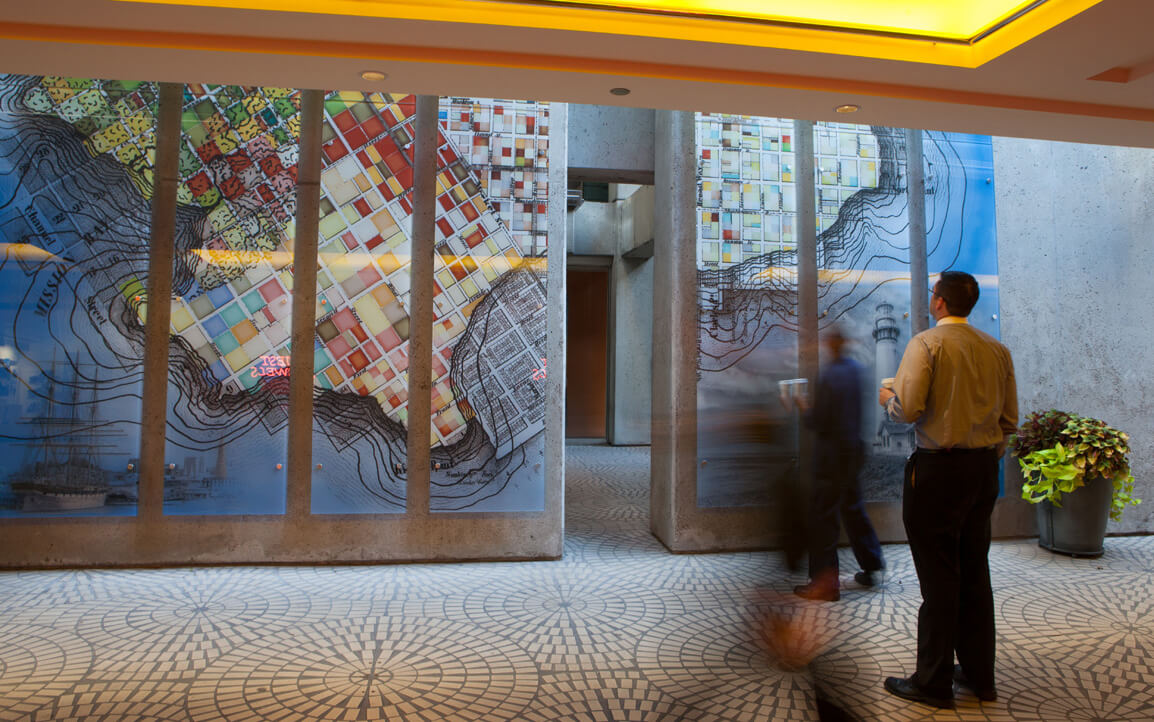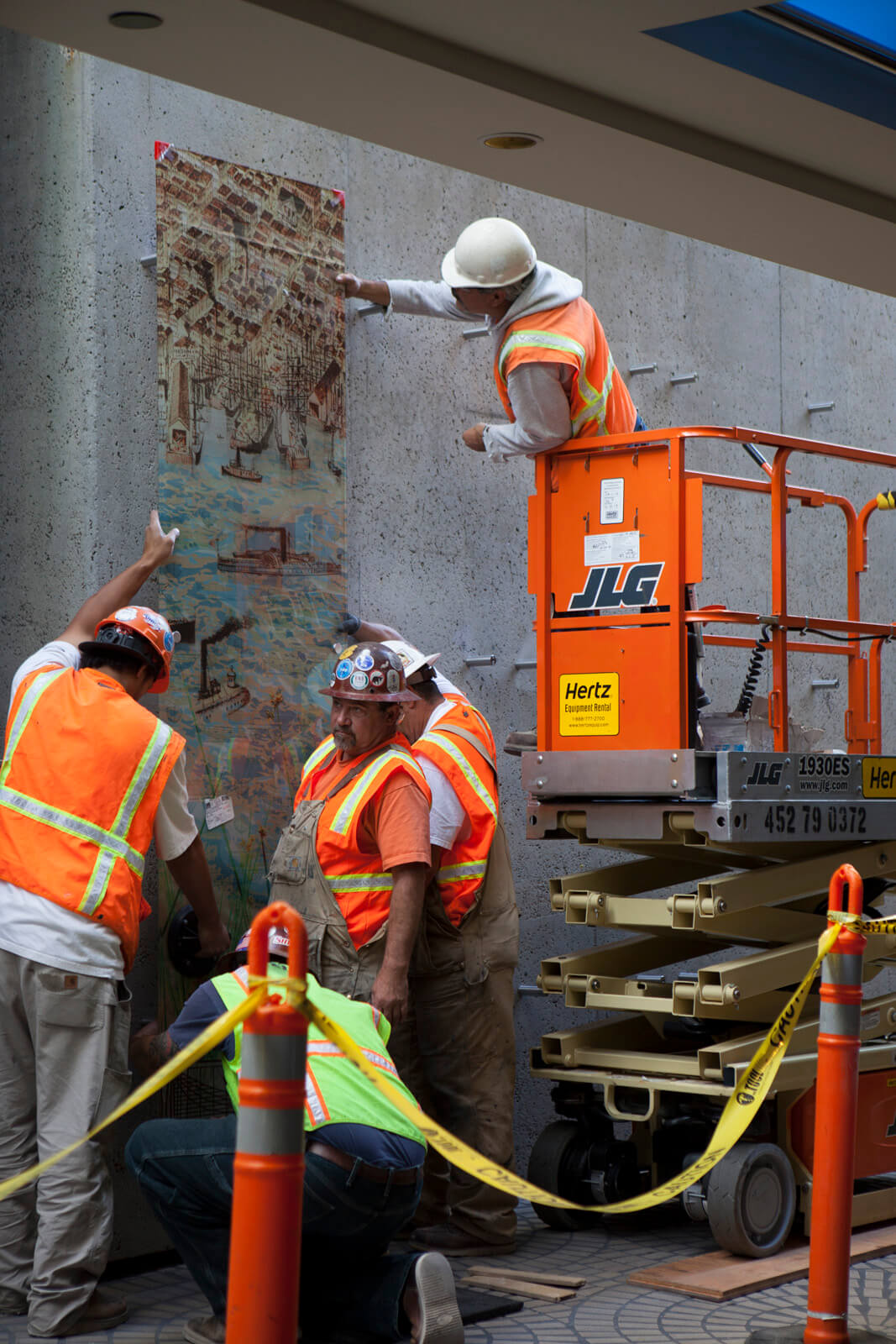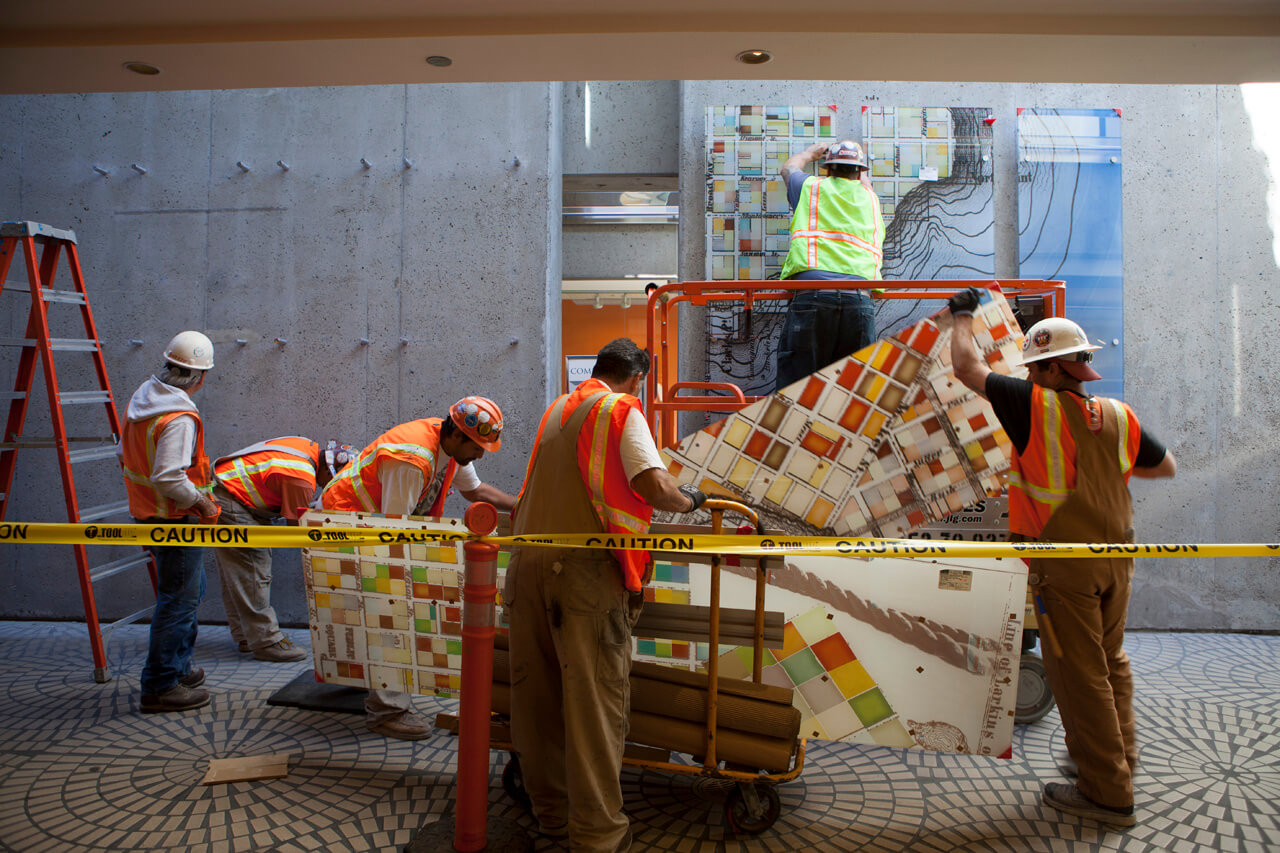San Francisco’s Evolving Waterfront
Embarcadero Center buildings 2 and 3, San Francisco, California
2012
each mural is 20ft x 32ft x 6in
vitreous enamel on glass
partner: Troy Corliss
The City of San Francisco grew up fast in the late 1800s. After the Mexican- American war and the discovery of gold in California's Sierra Nevada Mountains, the population mushroomed from the small town of Yerba Buena into a full scale international port city. The place where you are presently standing was once the main shipping port of San Francisco. Here, regal clipper ships brought supplies and people from the Eastern U.S., Asia, Europe, and South America.
A series of early fires, landfill, and development buried this important pioneer seaport. Artifacts and entire ship hulls are now buried beneath your feet. In 1850, pioneer William Heath Davis wrote that this place “…was the thoroughfare for communication with vessels, and was crowded from morning 'til night with drays and wagons coming and going, sailors, miners and others of all nationalities; speaking with a great variety of tongues, moved busily about; steamers arriving and departing, schooners were taking merchandise for the mines, boats were crowding in here and there—the whole resembling a great beehive...”
The beehive of activity continues on as we walk above the Gold Rush waterfront, California's first international hub of transportation and trade. The artists Corliss and Christopherson bring light to the strata of history with colorful historic maps and layers of imagery spanning time.






